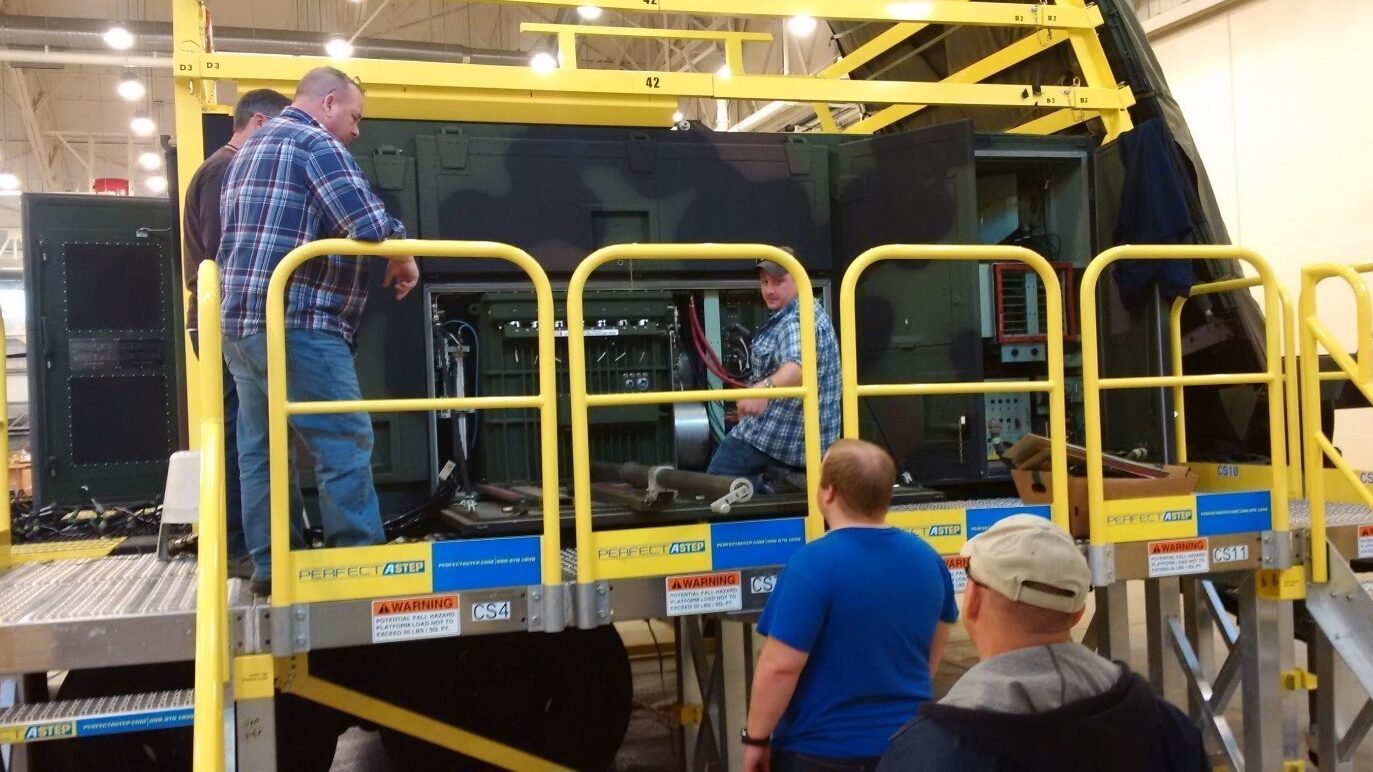
Army depot workers seen in a 2017 photo. (DVIDS)
The defense industry has a reputation of being very traditional in how it approaches recruiting and talent management. But post-COVID, the workforce has changed, and in this new op-ed, Jennifer Brummund, chief human resources officer for Raytheon, presents six suggestions for how the industry itself needs to change to keep up.
The defense industry has a labor problem, and it’s time to admit the old ways of bringing in talent are never coming back.
We are in dire need of high-tech professionals – from machine learning specialists, to power systems engineers, to advanced thermal analysts – to meet the immediate national security needs of the U.S. and our allies. Despite a low overall unemployment rate, hiring is still extremely competitive for the types of employees we need to be able to deliver next-generation solutions.
In a tight labor market with intense competition across industries and post-pandemic cultural expectations, requiring high-level qualifications such as PhDs and security clearance eligibility makes the challenge feel existential.
Raytheon, where I lead human resources and recruiting, has filled thousands of engineering roles since the beginning of the year and more than half are recent college graduates without some of those extra bona fides. This summer, we’ll bring in another 400 engineering interns. This shows that there is plenty of intellectual talent out there without expensive, time-draining degrees next to their name that able meet our national security obligations. And collectively the industry and our customers need to do a better job adapting to a new paradigm.
While some reflect with nostalgia on the pre-COVID days of 3% employee turnover in our industry, we should not even want to go back — that was too low and put us out of step with the rest of the economy. The defense industry was historically constrained by a mindset that time in the job was the only way to obtain competence. While we value and are proud to retain our longtime employees, we also need to welcome those just starting out.
We advance when we have the flexibility to bring in new colleagues with a range of experience from inside and outside the sector. Here is how we can adapt to and embrace the new normal:
Continue streamlining the security clearance process. We must assign meaningful work right away, which is much easier to do when a new employee is issued a security clearance quickly. Rep. Jason Crow, D-Colo., raised this at a March Center for Strategic and International Studies event, noting that a rapid clearance process will help keep candidates interested. Crow also wisely advocated for pre-clearances for interns and apprentices at the high school and college level, so a talent pipeline is ready.
Bring our product innovation mindset to internal processes. The defense industry is on the cutting edge of innovation when it comes to the technology being developed for our products. This same innovation should also be applied to improving our business systems. For example, AI is already helping companies like ours find, screen and select talent for a quicker, more efficient recruiting and hiring experience. We’re also using this technology to seamlessly match internal candidates to open positions across the company.
Support and fund apprenticeship programs. Raytheon runs an engineering apprenticeship program where early career professionals are paired with a senior mentor in their field. The program has successfully lured interested applicants while encouraging learning and growth early on. These types of apprenticeship programs are especially important to be able to seamlessly integrate the new workforce into our business.
At Raytheon, 36 percent of our employees have been with us for only three years, and nearly 50% have less than five years of service, which is just slightly above our industry peer group (Reference: EY’s 2022 A&D Workforce Study). We have had success hiring new employees who are motivated by our mission and driven by our values, but they need training and security clearances for them to truly hit the ground running. And we’re not unique — the same factors we see with our new workforce must be happening across the industry.
The Department of Defense should partner with industry to fund apprenticeship programs to ensure these initiatives can grow and support the next generation of defense talent.
Offer increased flexibility. The post-pandemic world of work has embraced flexibility, with an emphasis on remote work opportunities. By their frequently classified nature, defense jobs often require in-person work, and often in a Sensitive Compartmented Information Facility (SCIF). While we can’t always offer remote positions, we must offer flexibility in other ways. Less rigid work hours, remote days, or other creative perks are some of the ways we as an industry can compete to attract talent that expects flexibility in the workplace. It’s also important to invest in ways to improve what it’s like to work in SCIFs and establish environments where people can thrive.
Work with DoD to obtain relief on requirements for personnel. When we get a development contract, we need flexibility to have certain tasks performed by non-degreed engineers. This would allow us to take advantage of some of the software (non-degree) talent in the market that companies like Google, IBM and Amazon employ for roles including data science, cloud computing, cybersecurity and digital design. Due to the large demand and strained supply of software engineers in particular, many tech companies are hiring based on a combination of skills, certifications, internships and other experience instead of whether a candidate has a degree in a STEM field or a bachelor’s degree at all. If the defense industry could similarly open the aperture when it comes to talent and adopt this approach, it would help us staff programs faster and more affordably.
Tout our industry’s innovation and impact. Mind-blowing technology and scientific advances are happening in defense labs across the country, but often in secret. While much of our work is classified, industry and the DoD would benefit from publicizing how interesting, innovative, and exciting our work is, when and where we can. Those on the frontlines understand how important what we’re doing is, and we need to do a better job of translating that for the home front by getting more comfortable sharing and promoting stories that demonstrate our very tangible impact on America’s security and democracy’s future around the world. Examples of innovation could captivate and entice eager professionals, while showcasing the humanitarian impact of our work to bring safety and stability to the world – like teams working around the clock to send lifesaving radars to Ukraine just days after Russia’s invasion.
The defense industry is working every day to protect the U.S. and its allies. Importantly, if we can deter aggression before it happens, fewer Americans are put in harm’s way. And what we see year after year is that once employees understand this mission – and the high stakes of what we do – they are committed to its success. They become the people tackling the toughest challenges and creating solutions that are smarter, faster, and better than previously thought possible.
Everything starts with them, and the passion they bring to inventing, iterating, executing, and collaborating will help create a safer, more connected world.
Jennifer Brummund is vice president of Human Resources and chief human resources officer for Raytheon, a business of RTX. In this role she is responsible for recruitment, retention and professional development for the 57,000-employee busin
Israel retires Patriot air defenses as native air defense systems step up
The decision comes amid Ukrainian clamoring for the system, though analysts doubted Israeli batteries would make their way north due to Russian sensitivities.


























